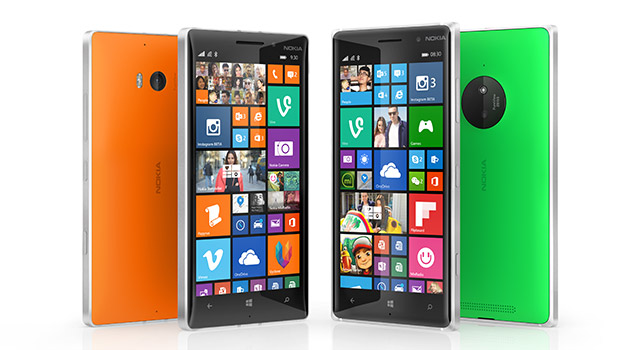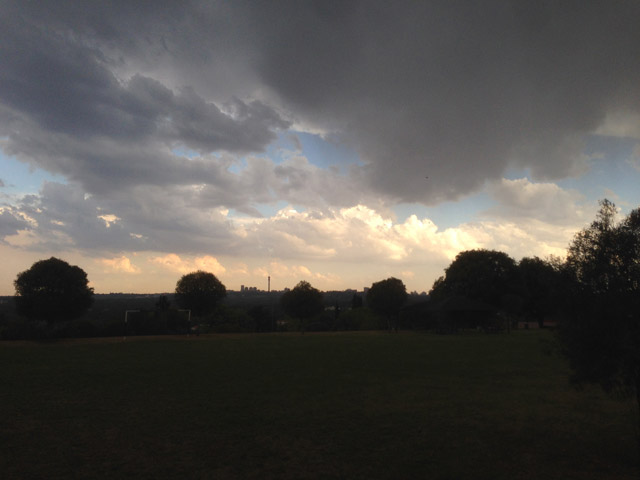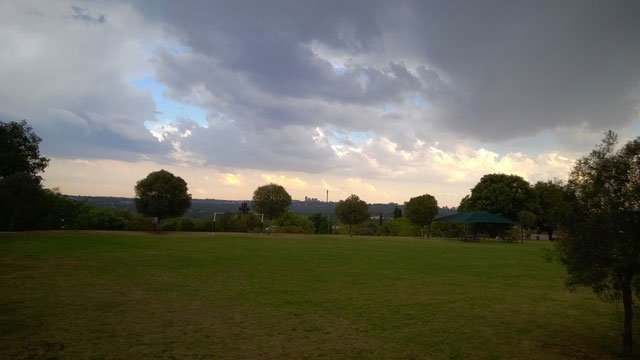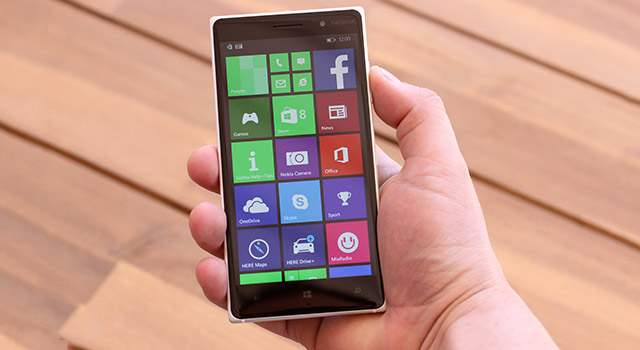
Nokia, now part of Microsoft, has been on a roll this year, announcing a number of superb new Windows Phone-based Lumia devices.
Last week, the company launched its newest midrange smartphone, the Lumia 830, in South Africa. The 830 is priced comfortably below the flagship Lumia 930, but it’s no slouch in the features department.
Microsoft announced the phone, dubbed its “affordable flagship”, at the IFA consumer electronics show in Germany in September. The phone closely resembles other high-end phones in the Lumia series, most notably the brushed metal chassis and colourful back cover.
We received the bright green version for review — it’s so bright that it’s like DayGlo. Other colours available to South African consumers are bright orange and white.
Compared to the 930, the 830 has a noticeably squarer edge. Both devices have a 5-inch LCD but the cheaper of the two has 720p resolution (pixel density: 294ppi), while 930’s 1080p screen offers 441ppi. Unless one compares the two phones side by side, it’s hard to fault the Lumia 830’s screen, which is still sharp and beautiful to look at.
The Lumia 830 is also a little lighter and thinner — 150g compared to Lumia 930’s 167g and 8,5mm at its thickest point against the 930’s 9,8mm. It’s light in the pocket and a pleasure to carry.
But it’s the camera more than anything else that may sway consumers to buy the Lumia 830. The phone has a 10-megapixel PureView camera with the sort of optical image stabiliser usually only found in top-end models.
This means that the Lumia 830 handles camera shake with hardware compensation, not software optimisation, and this makes a big difference when it comes to the quality of images it produces under low-light conditions. Not even the iPhone 6 has optical image stabilisation — Apple reserved it exclusively for the 6 Plus.
The quality of the Lumia 830’s photographs is superb. Images are bright and the camera handles colour saturation well. While photos taken in bright-light conditions are good, the Lumia 830 performs superbly in low light. The camera’s aperture is f/2.2 and it has a wide focal length of 26mm, allowing it to capture a wide field of view.
We challenged the phone’s camera capabilities by doing a test shoot on a stormy Johannesburg afternoon. Pointing the camera towards the city skyline, it produced bright and well-saturated images. It delivered a lot of detail in the shadows, which is evident in the details around the clouds in our test image (see below). For comparison, we also took a shot of the skyline using the older iPhone 5 with an 8-megapixel sensor. The differences are clearly noticeable in the test results.
If the subject gets too dark, there is a built-in LED flash that works well to lighten a subject that happens to be nearby.


The camera also takes great video, shooting 1080p at 30fps.
As with other phones in the Lumia range, this one also features a dedicated camera button.
There is also a front facing camera on the Lumia 830, although this one is a relatively poor 0,9 megapixels, good only for low-quality selfies or grainy video calls.
Not as snappy
Considering we reviewed the high-end Lumia 930 just last month, the slower performance of the midrange 830 was noticeable in our testing. But it’s far from being a slouch.
The 830 packs a 1,2GHz quad-core Snapdragon 400 processor and 1GB or RAM. There is also 16GB of flash storage, which can be expanded by way of a microSD card, with cards of up to 128GB supported.
Lumia 830 owners also get 15GB of free Microsoft OneDrive cloud storage when they sign into their account from the phone.
The device runs the latest version of Windows Phone 8.1, called the Lumia Denim update, which includes enhanced camera features.
This latest update also adds improvements to Microsoft’s intelligent personal assistant, Cortana, but that feature is not supported in South Africa yet.
Not all roses
Although there is much to love about the Lumia 830, we also have a few gripes.
Chief among these is is the button layout and the positioning of the charging port. The three buttons on the right side of the phone include the volume rocker, power button and the dedicated camera button, but for some reason these are spaced quite far apart and it can be difficult to reach the power button with a thumb.
We were also baffled as to why the charging port would be moved to the top of the device, next to the 3,5mm earphone jack. It may make it easier to use the phone in hand when its charging, but it makes the Lumia 830 difficult to mount in-car when using it for navigation.

Unfortunately, the screen does not rotate when the phone is held upside down — something that could be a simple fix for people who use their smartphone for navigation.
The battery life on the Lumia 830 can be compared to other midrange smartphones, for an average day’s use, you’ll only need to recharge in the evenings. The removable 2 200mAh battery won’t last more than a work day if it is being used regularly. It does support wireless charging, though. However, the wireless charging station is an optional extra.
Speed king
The Lumia 830 supports an extensive list of connectivity options: Wi-Fi 802.11 a/b/g/n, Bluetooth 4.0 and 4G/LTE in most popular bands (though not Telkom’s 2,3GHz). Those on Vodacom and MTN will be fine.
Interestingly, the Lumia 830 also has built-in NFC support. This should prove handy considering the number of peripherals that now support one-touch NFC pairing. Commerce using NFC on a wide scale is still a while off, though.
In summary, Nokia has again produced a great device. The Windows Phone operating system is improving all the time, though there are still gaps in the app line-up and those migrating from Android or iOS should check if their favourite apps are available before making the leap.
If you want the look and feel of Nokia’s flagship Lumia 930 but can’t quite afford its R8 000 price tag, you’ll love what the Lumia 830 has to offer. It’s not quite the Android midrange killer that we had hoped for, but fans of the Windows Phone platform will appreciate it.
The Lumia 830 will only be available on Vodacom for R5 989 cash or from R359 per month on a Smart S contract. The Orange online store has it for about R1 000 less, so that’s an option, too. — © 2014 NewsCentral Media




